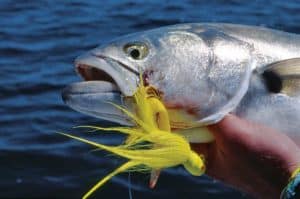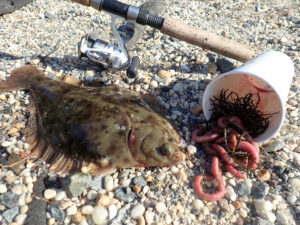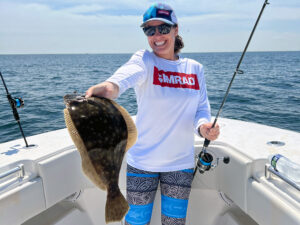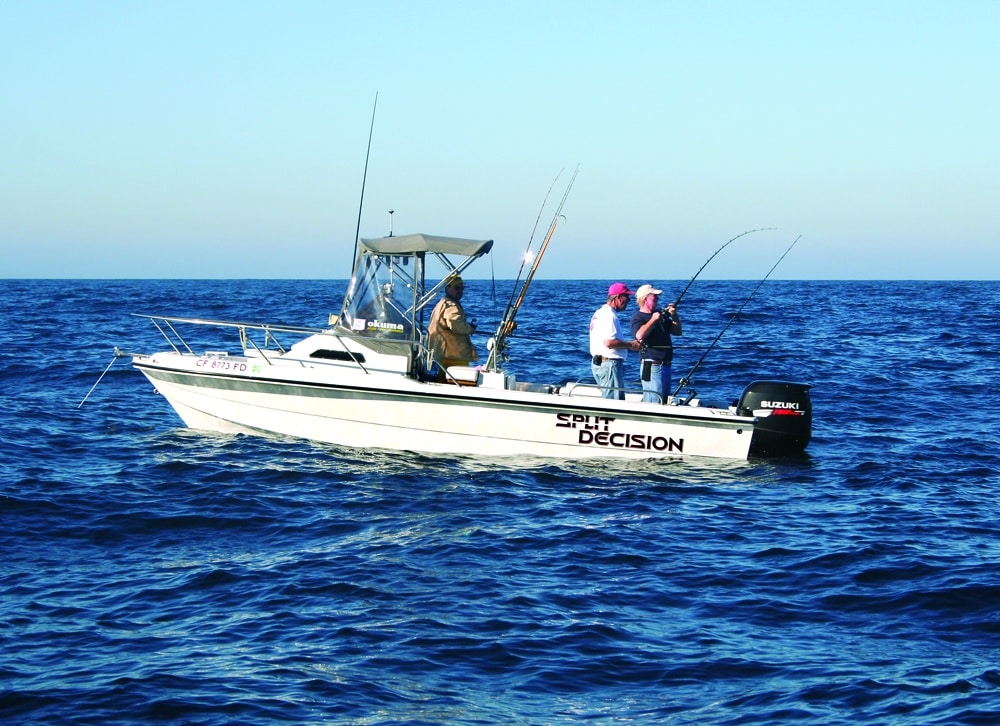
Anchor Up and Hook Up
Sometimes the game calls for anchoring in deep water. Whether you fish for grouper on wrecks, cobia around rigs or California yellowtail on pinnacles, it pays to know the intricacies of boat anchoring in relatively deep water.
Anchoring in depths down to 300 feet requires the right ground tackle, lots of rode, a good fish finder, an understanding of current and wind, and a means of anchor retrieval (other than your arms and back).
Plenty of Rode
Great depths call for a great amount of anchor line. For example, on my 22-foot center-console boat, with which I regularly anchor in depths of 200 feet, I carry 600 feet of ½-inch twisted nylon line plus chain (known collectively as rode). The deeper you anchor, the more rode you need.
Of course, you’ll need a place to stow that much rode. If you find your anchor locker lacks sufficient room, carry the rode in a plastic tote or laundry basket you secure in the forward cockpit. Drill ½-inch holes in the bottom of the tote or basket to drain any water.
Watch the Bottom
If you’re anchoring to fish a deep spot, strive to set in mud or sand, even if fishing a reef or wreck. Your fish finder will tell you bottom composition, which shows as a lighter, shallower echo return than the dark, deep return of rocks or the hulk of a wreck.
Setting the anchor in the adjacent mud or sand and then scoping back to the spot with wind or current will help assure that the anchor and chain (aka ground tackle) does not become irretrievably fouled in the structure. Extracting a snagged anchor in hundreds of feet of water poses a serious challenge, and can even put your boat at risk in heavy seas. If you can’t free the anchor, cut the line.
When both wind and current flow in the same direction (what I call “straight-back” conditions), boat anchoring is a simple matter of motoring upwind/up-current, getting the anchor set, then scoping back. I like to set the anchor at a distance roughly equaling three times the depth, giving me slightly more than a 3-to-1 scope (three times as much anchor line as the depth).
However, when wind and current disagree, it often boils down to trial and error. Make an educated guess, get the anchor down and see how the boat lays. If it’s not right for fishing the spot, record the compass heading at which the anchor line points (it’s not always the same way the bow points). Then retrieve the anchor and set up the boat using the compass bearing from the spot.
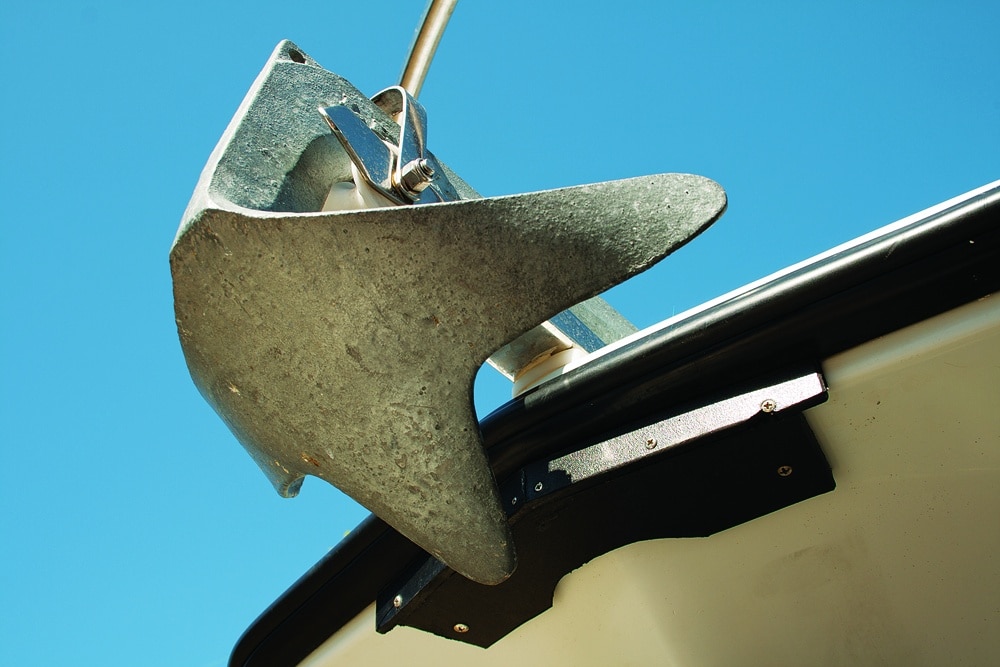
Get the Right Anchor
Ground Tackle
A range of anchor types hold bottom well, including traditional fluke-styles such as a Danforth Standard, and plow-styles such as a Lewmar Delta Fast-Set. While a great number of factors affect an anchor’s performance, a claw-style such as a Bruce, Lewmar Claw or Manson Ray ranks among the best for deep sets.
These are heavier and more hydrodynamic than most anchors, and so sink to the bottom more quickly, which is critical if you have current that can “blow” a lighter anchor away from its intended landing spot or cause it to flutter and entangle with the chain.
Second, claw-styles set quickly: I’ve seen demonstrations in which they bury themselves within their own shank length. The greater the depth, the more important this becomes.
Finally, in most conditions, claw-style anchors hold well enough to fish a spot with as little as 3-to-1 scope — an important consideration at great depths. In anchoring in 200 feet with 600 feet of rode, for example, the most I can offer is 3-to-1.
Remember that I’m not talking about overnighting or riding out a blow in shallower anchorages. For these situations, other types of anchors have proved to hold better than a claw, particularly when given sufficient scope. I carry a second, lightweight fluke-style Fortress anchor for these applications.
Size It Right
To hold well, the anchor needs to be sized properly — sometimes oversized — for the boat. Marine retailers such as West Marine publish manufacturer sizing charts, though there’s some disparity between anchor brands. For my 22-footer, for instance, West Marine’s chart for the Lewmar Claw indicates an 11-pound anchor ($50 for galvanized), while the Manson Ray chart specifies a 22-pounder ($475 for galvanized). I split the difference and got a 16.5-pound Lewmar Claw ($68 for galvanized).
Don’t forget anchor chain. Not only does it provide chafe protection, it keeps the shank parallel to the bottom to help the anchor set more quickly and hold more effectively.
A rule of thumb says to equip your anchor with the same amount of chain as the length of your boat, but as with the anchor, more is better. So I have 40 feet of chain. This also affords me the luxury of using less scope with the anchor line because the extra chain multiplies the anchor’s holding power.
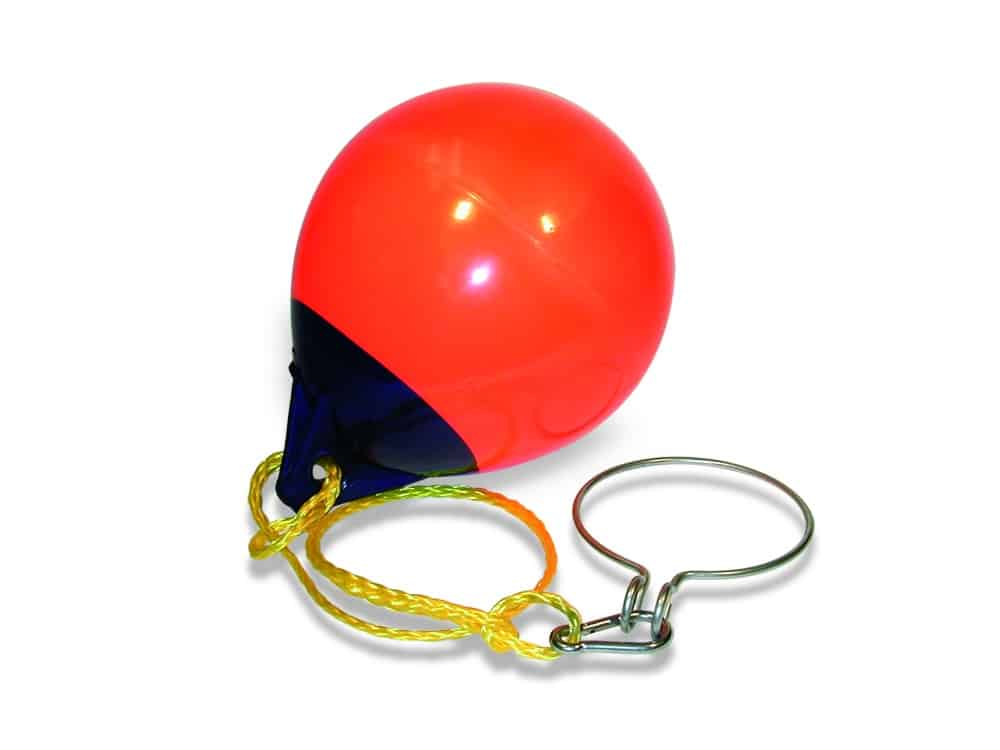
Anchor Ball
Getting It Back
In the past, my crew turned mutinous when it came time to retrieve by hand two football fields of wet anchor line, plus the weight of the chain and anchor. These days, however, an electric windlass keeps the crew happy while weighing anchor.
If you’re thinking of adding a windlass, be aware that each model requires a specific line and chain type, as well as a rope-to-chain splice, for the gypsy to grip the rode properly. My Lewmar ProFish 700 (about $1,020), for example, requires ½-inch rope (about $1.28 per foot) and ¼-inch galvanized Grade 43 chain ($4.34 per foot).
For deep anchoring and fishing in general, insist on a windlass with a free-fall feature, which allows the anchor to drop unfettered when you release the gypsy. This ensures that the anchor gets to the bottom as quickly as possible. For a windlass to work effectively, your boat also needs an anchor roller.
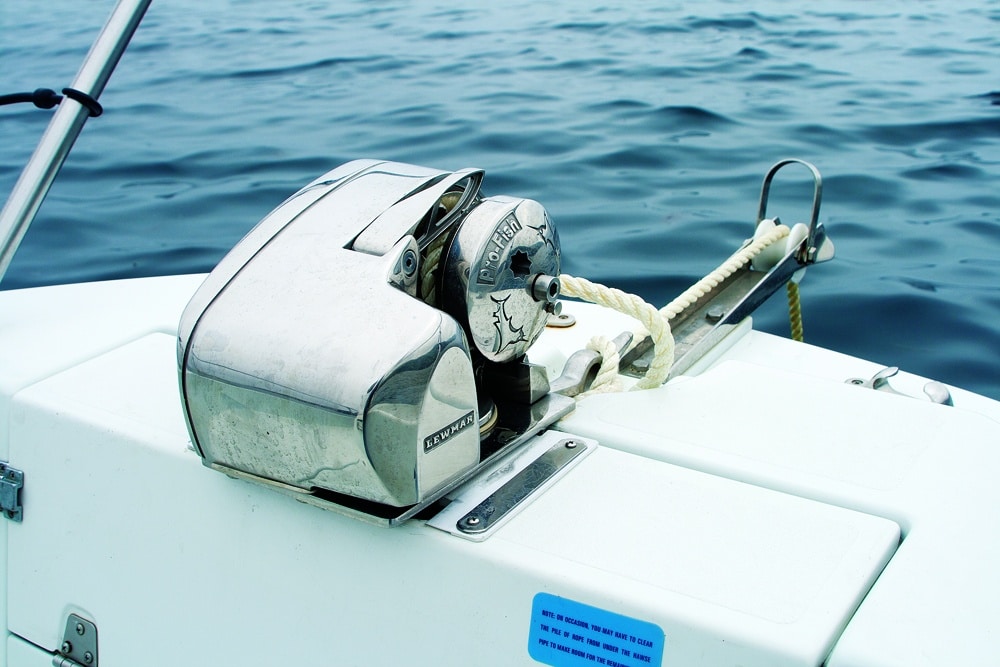
Wonderful Windlass
Another means of easy retrieval is a buoy-and-ring setup such as the Anchor Retriever from T-H Marine (about $90). With this system, you place the ring over your anchor line, attach a large buoy, toss it overboard and then run forward at about 7 knots, being careful not to foul the line in a propeller. The buoy moves down the line toward the anchor, pulling it free and floating it to the surface. Stop the boat and gather the slack anchor line by hand.
Anchoring in great depths is definitely a specialized form of fishing. With the right gear and a bit of experience, you can anchor with confidence. Just as important, you can retrieve your anchor line and ground tackle with ease.

